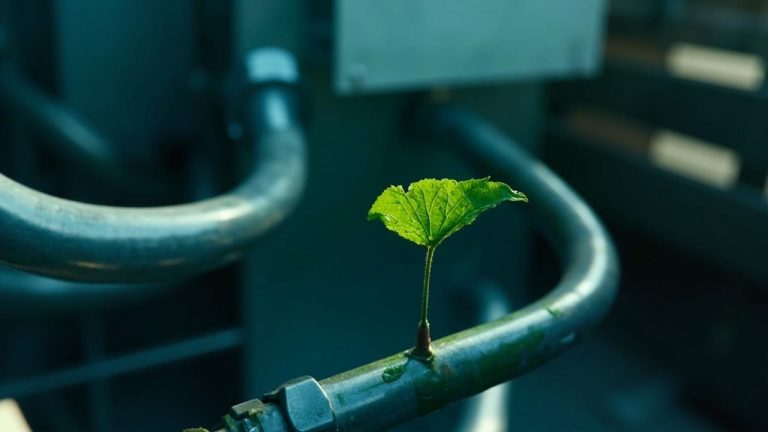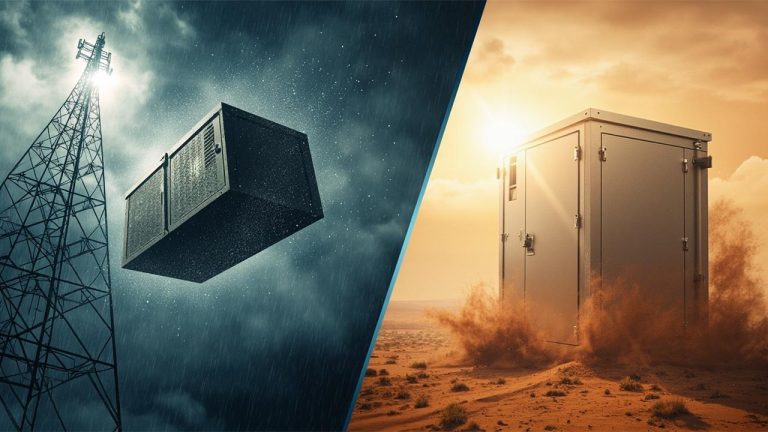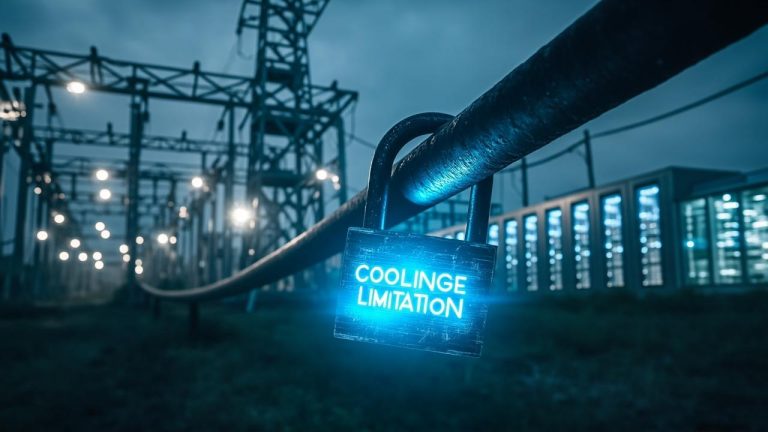Introduction
Effectively managing supply chain logistics is crucial when constructing a facility capable of generating a gigawatt of power. But just how much power is that? A gigawatt (GW) represents an immense amount of energy, capable of powering hundreds of thousands of homes. The very idea of sourcing all the necessary components to bring such a massive project to life is daunting, presenting unique challenges that demand meticulous planning and execution.
The scale of sourcing for a gigawatt of power is almost unimaginable. It requires the acquisition of countless mechanical components, from the massive steel structures that form the backbone of the facility to the smallest, yet critical, fasteners that hold everything together.
This blog post aims to pull back the curtain and provide an in-depth look at the intricate sourcing processes we employ to tackle this challenge. We will be focusing primarily on mechanical components for a large-scale solar farm.
This journey behind the scenes will reveal the key challenges we face, the innovative solutions we develop, and the rigorous processes we implement to ensure the reliable and efficient delivery of essential mechanical components. We’ll explore everything from defining the precise technical specifications of each item to meticulously vetting and selecting the right vendors to partner with. Prepare to delve into the complexities of navigating a global supply chain and maintaining unwavering quality control throughout the entire process.
Defining the Mechanicals
For a project of this magnitude, it’s crucial to have a clear understanding of the sheer volume and variety of mechanical components involved. When we talk about mechanicals for a gigawatt-scale solar farm, we’re not just talking about a few nuts and bolts. We are dealing with an ecosystem of interconnected systems, each with its own set of critical components.
Accurately defining and categorizing these components is the first step in ensuring a successful project. Without a clear understanding of what we need, effectively sourcing it becomes impossible.
Structural Foundations and Support Systems
One of the most significant categories of mechanicals is structural steel. This includes everything from the foundations that anchor the solar panels to the ground to the racking systems that hold them in place. The specifications for this steel are incredibly demanding, requiring it to withstand high winds, extreme temperatures, and constant exposure to the elements.
For example, the foundations need to be designed to handle specific soil conditions and wind loads, while the racking systems need to be precisely engineered to optimize sunlight capture. The sheer scale of a gigawatt project means that we require tens of thousands of tons of structural steel, all of which must meet stringent quality standards. The type of steel selected varies from galvanized steel to aluminum alloys depending on the local climate and environmental considerations.
Fluid Management and Cooling Systems
Another critical area is piping and valves. While a solar farm isn’t as reliant on extensive piping as, say, a nuclear power plant, there are still significant needs for water management, particularly for cleaning the solar panels and for any potential cooling systems related to inverters or transformers. These systems need to be highly reliable to ensure efficient operation of the plant.
Similarly, pumps and compressors are crucial for fluid and gas handling, which may include pumping water for cleaning or circulating coolant for temperature regulation. Selecting the correct materials for the piping and valves is critical, as they need to be compatible with the fluids being transported and resistant to corrosion. All of this requires careful planning and execution in terms of supply chain logistics.
Rotating Equipment and Fasteners
Rotating equipment, while perhaps not as prevalent in a solar farm as in other types of power plants, can still play a key role, particularly with auxiliary systems such as large ventilation fans or motors for tracking systems. These components need to be highly efficient and reliable to minimize energy consumption and maintenance requirements. Finally, and perhaps most deceptively, the sheer volume of fasteners and hardware required should not be underestimated.
Bolts, nuts, washers, anchors – these seemingly small items are essential for holding everything together. A gigawatt-scale project requires millions of these fasteners, and ensuring that they meet the necessary strength and corrosion resistance standards is a major undertaking. Each one plays a crucial role in the overall integrity of the project.
Needs Assessment and Technical Specifications
The foundation of any successful gigawatt-scale power project lies in the meticulous translation of high-level engineering designs into concrete, actionable technical specifications for each and every mechanical component. This process is far more involved than simply stating the obvious dimensions. It demands a deep dive into performance requirements, environmental factors, and regulatory compliance, all while keeping a keen eye on cost-effectiveness.
Our team invests significant time upfront, collaborating closely with design engineers, to ensure that every nut, bolt, and turbine is precisely defined before engaging with potential suppliers. Without this dedication to upfront planning, the entire project is at risk of delays, cost overruns, and compromised performance.
Accuracy and precision are paramount. We adhere strictly to internationally recognized industry standards like ASME, ANSI, and ISO. These standards provide a framework for ensuring the quality, safety, and interoperability of mechanical components. The specifications dictate not only dimensions and tolerances but also material properties, surface finishes, and testing protocols.
To achieve this level of detail, we rely heavily on advanced engineering tools such as CAD (Computer-Aided Design) software to create detailed 3D models of each component. These models are then subjected to rigorous simulations, including finite element analysis (FEA) for stress analysis, to validate their structural integrity under various operating conditions.
Material selection is a crucial aspect of this phase, balancing performance characteristics with cost and availability. Factors such as corrosion resistance, tensile strength, and thermal conductivity are carefully considered based on the specific application and environmental context.
The result of this rigorous process is a comprehensive set of technical specifications that serve as the definitive guide for vendor selection and manufacturing. These specifications are not static documents; they are living documents that evolve as the design progresses and new information becomes available. They also form the basis for our robust quality assurance program, ensuring that every component meets our stringent requirements.
The effectiveness of our approach directly impacts the overall efficiency of our supply chain logistics, minimizing delays and ensuring that the right components arrive at the right place, at the right time. A detailed specification package will include:
Vendor Qualification and Selection
Selecting the right vendors is paramount to the success of any large-scale power project. Our vendor qualification process is a rigorous, multi-stage evaluation designed to identify suppliers who not only meet our technical requirements but also align with our values and long-term strategic goals. We start by casting a wide net, identifying potential suppliers through industry databases, referrals, and our own market research.
The initial screening focuses on core capabilities, assessing whether a vendor possesses the manufacturing capacity, technical expertise, and relevant experience to handle the specific requirements of our project. This involves a thorough review of their company profile, product catalogs, and past project performance.
The next stage involves a detailed request for quotation (RFQ) process. We provide potential vendors with comprehensive technical specifications, performance requirements, and quality standards for each mechanical component. Vendors are then invited to submit detailed proposals outlining their pricing, lead times, manufacturing processes, and quality control procedures.

These proposals are carefully evaluated by our engineering, procurement, and quality assurance teams, using a weighted scoring system that considers factors such as price, technical compliance, delivery schedule, and warranty terms. Shortlisted vendors are then subject to a more in-depth technical audit, which may include site visits to their manufacturing facilities. These audits allow us to verify their manufacturing capabilities, assess their quality control processes, and ensure they adhere to relevant industry standards and certifications, such as ISO 9001.
Furthermore, we place significant emphasis on building long-term relationships with our key suppliers. We view our vendors as strategic partners, not just transactional entities. We seek out suppliers who are willing to collaborate with us on design optimization, value engineering, and continuous improvement initiatives. This collaborative approach fosters trust, improves communication, and ultimately leads to better outcomes for both parties.
Geographic location and its impact on supply chain logistics is also a key consideration. Ideally, we aim for a mix of local, regional, and international suppliers to balance cost, lead times, and risk mitigation. Our goal is to create a resilient and responsive network of reliable vendors that can support the long-term success of our gigawatt-scale power projects.
| Vendor Qualification Criteria | Importance |
|---|---|
| Manufacturing Capabilities and Capacity | High |
| Quality Control Processes and Certifications | High |
| Experience with Similar Projects | Medium |
| Financial Stability | Medium |
| Adherence to Ethical Sourcing Practices | Medium |
| Geographic Location and Logistics | Medium |
Navigating Supply Chain Logistics for a Gigawatt of Power
The sheer scale of a gigawatt-level project introduces complexities that ripple through the entire supply chain. Managing the flow of thousands of components from various vendors, often spread across the globe, demands meticulous planning and execution. Visibility is paramount.
We leverage Enterprise Resource Planning (ERP) systems integrated with IoT sensors to track components from the factory floor to the construction site. This allows real-time monitoring of inventory levels, shipment status, and potential delays, enabling proactive intervention to keep the project on schedule. Without such systems, a project of this magnitude quickly becomes unmanageable.
Mitigating risks within the supply chain is a continuous process. We diversify our supplier base to avoid over-reliance on any single source, buffering against potential disruptions due to geopolitical events, natural disasters, or supplier-specific issues. We also maintain strategic buffer stocks of critical components to cushion against unexpected delays in delivery.
Quality control is embedded in every stage of the process, from initial supplier audits to final inspections at the construction site, ensuring that components meet stringent quality standards. These measures are critical to ensuring project success.
The intricacies of transportation, warehousing, and customs clearance add another layer of complexity. Each component must be carefully packaged and labeled to withstand the rigors of transportation. We work closely with logistics providers experienced in handling oversized and delicate equipment.
Warehousing strategies are optimized to minimize handling and storage costs while ensuring easy access to components when needed. Navigating customs regulations and documentation requirements requires specialized expertise to avoid costly delays. A robust supply chain logistics strategy is thus crucial for the seamless execution of a gigawatt-scale power project.
| Challenge | Mitigation Strategy |
|---|---|
| Single Supplier Reliance | Diversify Supplier Base |
| Delivery Delays | Maintain Buffer Stocks |
| Quality Issues | Implement Multi-Stage Quality Control |
Quality Assurance and Inspection
Our commitment to excellence extends beyond simply selecting the right vendors; it encompasses a rigorous quality assurance (QA) and inspection process designed to guarantee the performance and reliability of every mechanical component that finds its way into our gigawatt-scale projects. This multi-layered approach ensures that each part, from the smallest fastener to the largest turbine blade, meets our exacting specifications and withstands the demands of continuous operation in a power generation environment.
We understand that even a seemingly minor defect can have significant consequences, leading to downtime, reduced efficiency, and increased maintenance costs. Therefore, we leave no stone unturned in our pursuit of quality.
Supplier Audits and in-Process Inspections
The QA process begins well before any components are shipped to the construction site. We conduct thorough audits of our suppliers’ facilities and manufacturing processes to verify their ability to consistently produce high-quality products. These audits focus on everything from raw material sourcing and manufacturing equipment to quality control procedures and personnel training. We also implement in-process inspections at critical stages of manufacturing to identify and address any potential issues early on.
This proactive approach helps to prevent defects from occurring in the first place and ensures that components are manufactured to the highest standards. The in-process inspections might include dimensional checks, material testing, and visual inspections for surface defects.
Our team of quality engineers works closely with suppliers to provide guidance and support, helping them to improve their processes and maintain a culture of quality. This collaborative approach fosters a strong partnership and ensures that both parties are aligned on the importance of quality.
Final Inspections, Testing, and Independent Verification
Once manufacturing is complete, each component undergoes a final inspection to ensure that it meets all specified requirements. This inspection includes a comprehensive review of dimensional accuracy, material properties, and surface finish. Depending on the component’s function, we may also conduct performance testing to verify its ability to operate as intended. For critical components, such as turbines and generators, we often engage independent third-party inspection agencies to provide an unbiased assessment of quality and compliance.
These agencies conduct their own inspections and tests, providing an additional layer of assurance. The independent verification step is crucial for ensuring transparency and building confidence in the reliability of our equipment. Effective supply chain logistics is critical to making sure these components arrive safely for inspection.
Handling Non-Conformances and Implementing Corrective Actions
Despite our best efforts, non-conformances can sometimes occur. When a defect is identified, we have a well-defined process for documenting the issue, investigating the root cause, and implementing corrective actions. We work closely with the supplier to develop a plan to address the problem and prevent it from recurring in the future. This may involve changes to the manufacturing process, additional training for personnel, or revisions to the component design.
Our goal is not simply to fix the immediate problem, but to learn from it and improve our processes. We track all non-conformances and corrective actions in a central database, which allows us to identify trends and proactively address potential issues. This continuous improvement cycle is essential for maintaining the highest levels of quality and reliability.

Cost Optimization and Value Engineering
Cost optimization is not just about finding the cheapest parts; it’s about intelligently managing resources to achieve the best possible value over the entire lifecycle of the power plant. This requires a holistic approach, starting with the initial design and extending through procurement, installation, and operation. We prioritize strategies that minimize expenses without sacrificing the reliability and longevity of our mechanical components.
To achieve this, we employ a range of techniques:
Value engineering plays a crucial role in our cost optimization efforts. This systematic approach involves analyzing the function of each component to identify opportunities for simplification, improvement, and cost reduction. Value engineering isn’t simply about cutting costs; it’s about enhancing the overall value proposition of the project. A critical component of this is understanding the total cost of ownership.
This includes not just the initial purchase price but also the costs associated with installation, maintenance, repair, and eventual replacement. For instance, a slightly more expensive valve with a longer lifespan and lower maintenance requirements might prove more cost-effective in the long run. Effective *supply chain logistics* play a major part in lowering these costs.
Case Study
Consider a large-scale solar project where the racking system – the steel structures that support the solar panels – became a critical bottleneck. The initial vendor selected had demonstrated strong manufacturing capabilities on paper, but their actual production capacity proved insufficient to meet the project’s aggressive timelines.
Delays in racking delivery threatened to push back the entire commissioning date, resulting in significant financial penalties. This situation underscored the importance of thoroughly vetting a vendor’s *actual* capacity, not just relying on their stated capabilities.
To address this challenge, a dual-sourcing strategy was implemented. A second vendor, previously qualified but not initially awarded a significant portion of the contract, was brought in to supplement the primary vendor’s output. This required rapid negotiation, contract adjustments, and close coordination between the two vendors and the project’s engineering team to ensure compatibility of the racking components.
Simultaneously, the project team worked closely with the original vendor to identify and resolve the bottlenecks in their production process, providing technical assistance and process improvement suggestions. This included streamlining their internal workflow, optimizing their equipment setup, and assisting with workforce training.
The successful resolution of this near-crisis hinged on several key factors. Firstly, the pre-emptive qualification of multiple vendors proved invaluable, allowing for a swift shift in *supply chain logistics* when the initial vendor faltered. Secondly, proactive communication and collaboration between all stakeholders – the project team, the primary vendor, and the secondary vendor – were essential in coordinating the increased production and ensuring seamless integration of the racking components.
Finally, a flexible and adaptable project management approach enabled quick decision-making and the implementation of creative solutions to overcome the unforeseen challenge. Ultimately, the project was completed on time and within budget, demonstrating the importance of risk mitigation and proactive vendor management in large-scale renewable energy projects.
Conclusion
Sourcing the mechanical components for a gigawatt of power is an endeavor that demands meticulous planning, strategic execution, and unwavering commitment to quality. As we’ve explored in this behind-the-scenes look, the process extends far beyond simply ordering parts; it’s about building a reliable network of suppliers, implementing rigorous quality control measures, and navigating the complexities of global supply chains.
The sheer scale of these projects necessitates a proactive approach to risk management, ensuring that potential disruptions are mitigated and that the project remains on track.
The journey from initial design to final installation is paved with challenges, but also with opportunities for innovation and optimization. By embracing value engineering principles, leveraging advanced technologies, and fostering collaborative relationships with suppliers, we can drive down costs, improve performance, and enhance the overall sustainability of our projects.
Furthermore, we must remain agile and adaptable, constantly seeking new ways to streamline processes, improve efficiency, and ensure that we are delivering the best possible value to our clients. A robust approach to *supply chain logistics* helps in reducing costs for large-scale projects by eliminating downtime.
Ultimately, the success of any gigawatt-scale power project hinges on the reliability and performance of its mechanical components. By prioritizing quality, fostering strong supplier relationships, and embracing a data-driven approach to decision-making, we can ensure that these critical systems operate efficiently and reliably for decades to come. Contact us today to learn more about our comprehensive mechanical sourcing solutions and how we can help you power the future, one component at a time.
Frequently Asked Questions
What are the key components of a supply chain logistics strategy?
A supply chain logistics strategy hinges on several vital elements. First, a well-defined network design, encompassing facility location and transportation routes, is crucial. Inventory management, balancing holding costs with service levels, is another key aspect.
Furthermore, effective communication and collaboration among all supply chain partners are essential for seamless operations. Finally, a robust risk management plan to mitigate potential disruptions is necessary.
How can technology improve efficiency in supply chain logistics?
Technology offers significant opportunities to enhance supply chain logistics efficiency. Automation in warehouses, through robotics and automated guided vehicles, can accelerate processes and reduce errors. Real-time tracking and visibility, using technologies like RFID and GPS, enable better monitoring and proactive decision-making. Data analytics and artificial intelligence can optimize routes, predict demand, and improve overall resource allocation.
What are some common challenges faced in managing supply chain logistics?
Managing supply chain logistics presents numerous hurdles. Demand fluctuations, leading to stockouts or excess inventory, are a common problem. Transportation bottlenecks, such as port congestion or road closures, can disrupt delivery schedules. Geopolitical instability and natural disasters can create unforeseen disruptions. Maintaining visibility across the entire supply chain and ensuring data security are also persistent concerns.
How does supply chain logistics differ for different industries (e.g., retail vs. manufacturing)?
Supply chain logistics varies considerably across industries. Retail often requires managing a high volume of products with short shelf lives and meeting rapidly changing consumer demands, necessitating agile distribution networks.
Manufacturing focuses on sourcing raw materials, managing production schedules, and efficiently distributing finished goods, often involving complex transportation and storage requirements. The specific needs of each industry dictate the prioritization of different logistics strategies.
What is the role of warehousing and distribution centers in supply chain logistics?
Warehousing and distribution centers play a pivotal role in supply chain logistics. They serve as central hubs for receiving, storing, and processing goods, facilitating efficient order fulfillment. These facilities optimize inventory management, consolidate shipments, and enable timely delivery to customers. Their strategic location and effective operation are crucial for minimizing transportation costs and maximizing customer satisfaction.




